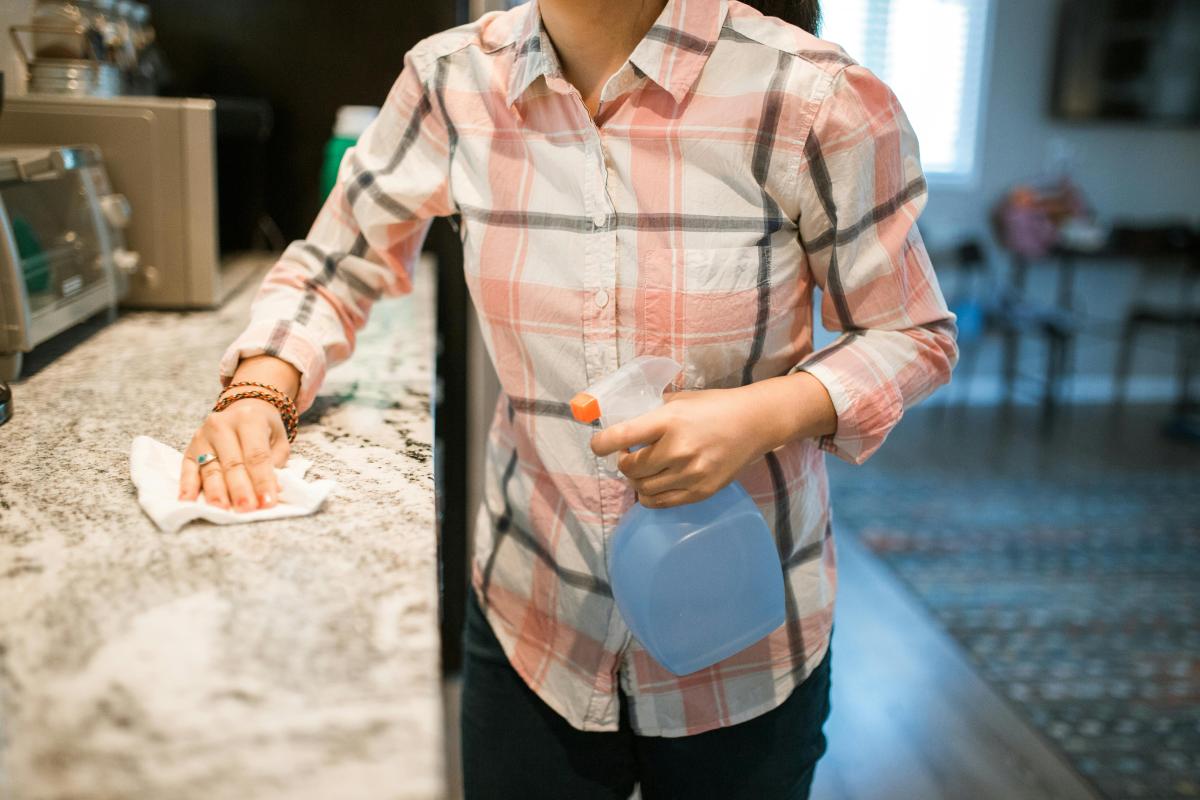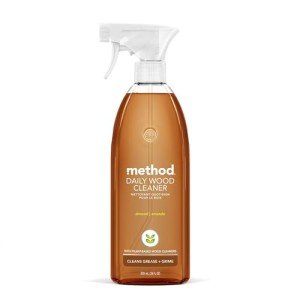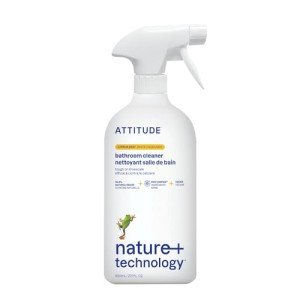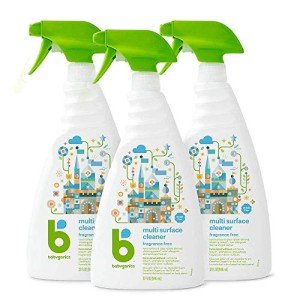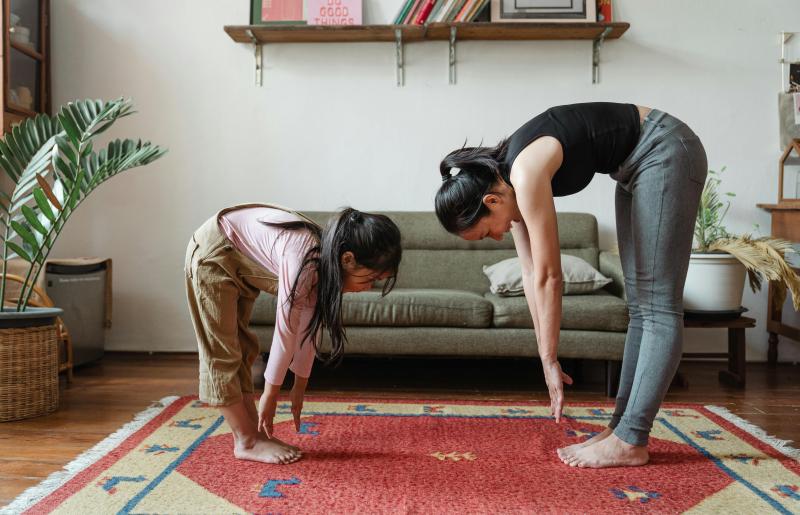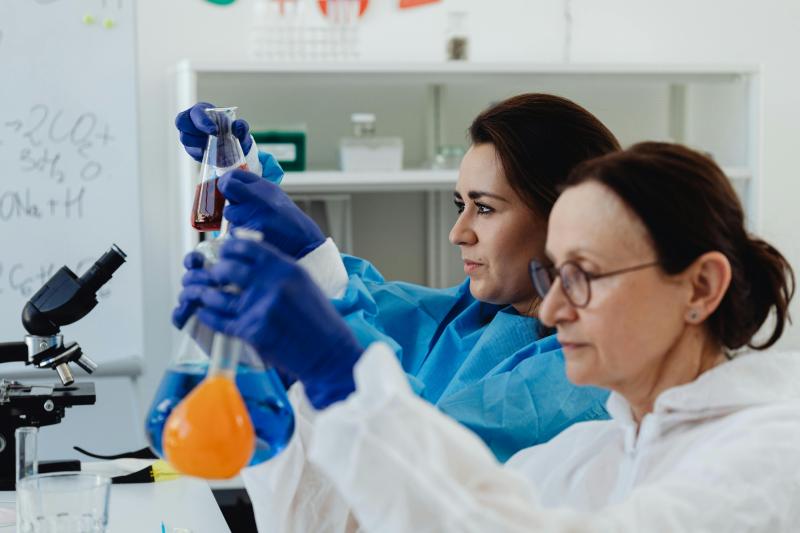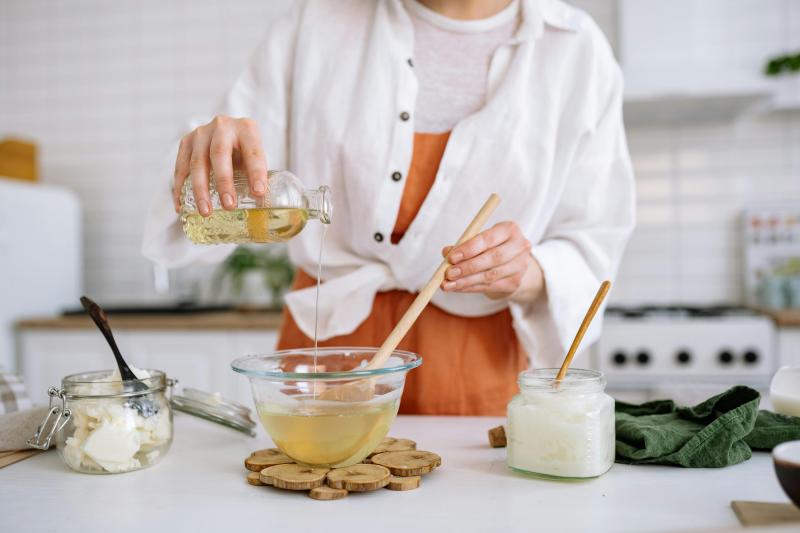|
BY JONATHAN ESSARY · JUNE 24, 2025 |
|
READ EST: 6 MINS |
Time to recover & reset
When illness strikes your household, the recovery process extends far beyond rest and medication—it includes the critical task of eliminating lingering germs that could reinfect your family or spread to other household members [1]. Traditional approaches to post-illness cleaning often rely on harsh chemicals like bleach and ammonia-based products, but these conventional disinfectants can pose their own health risks, particularly problematic when family members are already in a vulnerable state [2].
The challenge becomes even more complex for families committed to maintaining a non-toxic home environment. Research shows that illness-causing viruses and bacteria can survive on household surfaces for varying periods, with some pathogens remaining infectious for days or even weeks, depending on environmental conditions [3]. This reality makes effective disinfection essential, yet the conventional solutions marketed for this purpose often contradict the safer cleaning principles that health-conscious families have worked to establish.
Understanding how to achieve thorough disinfection using non-toxic methods provides families with the best of both worlds: effective pathogen elimination without introducing additional chemical hazards into an already stressed household environment [4]. This guide explores evidence-based strategies for safely cleaning your home after illness while maintaining the health standards that protect your family's long-term well-being.
UNDERSTANDING PATHOGEN SURVIVAL AND TRANSMISSION RISKS
The duration that illness-causing pathogens remain viable on household surfaces varies significantly based on the type of microorganism and environmental conditions [5]. Cold germs can survive on surfaces for up to one week, though they lose much of their effectiveness after the first 24 hours, while influenza viruses typically remain infectious on hard surfaces for 24 to 48 hours [6]. Perhaps most concerning for families, norovirus—the virus responsible for stomach flu—can persist on surfaces for days or even weeks, with infected individuals capable of spreading the virus for up to two weeks after feeling better [7].
Different surface materials affect pathogen survival rates in predictable ways [8]. Hard, nonporous surfaces like countertops, doorknobs, and light switches tend to harbor viruses longer than porous materials such as fabric, paper, or cardboard [8]. This scientific understanding helps families prioritize their post-illness cleaning efforts, focusing on intensive disinfection on high-risk surfaces while using gentler approaches for materials where pathogens naturally die off more quickly.
Environmental factors, including temperature, humidity, and pH levels, influence how long pathogens remain infectious [9]. The controlled environment of most homes provides conditions that can extend pathogen survival, making systematic disinfection more important than simply waiting for natural die-off [9]. Understanding these survival patterns helps families develop targeted cleaning strategies that address the specific risks present in their homes.
THE SCIENCE BEHIND NON-TOXIC DISINFECTION
Effective disinfection doesn't require harsh chemicals when you understand the mechanisms that make non-toxic alternatives successful [10]. Hydrogen peroxide represents one of the most scientifically validated non-toxic disinfectants, with research demonstrating its effectiveness against a wide range of pathogens, including bacteria, viruses, and fungi [11]. Studies show that hydrogen peroxide solutions as low as 0.5% can achieve significant pathogen reduction within minutes of contact time [11].
The antimicrobial action of hydrogen peroxide works by releasing oxygen radicals that damage cellular components of pathogens, effectively destroying their ability to cause infection [12]. Unlike chlorine bleach, hydrogen peroxide breaks down into water and oxygen, leaving no harmful residues that could affect family members recovering from illness [12]. Research conducted in healthcare settings demonstrates that hydrogen peroxide-based disinfectants can achieve greater pathogen reduction than traditional quaternary ammonium compounds while maintaining superior safety profiles [13].
Essential oils provide another scientifically supported approach to non-toxic disinfection, with thyme oil showing particularly impressive antimicrobial properties [14]. Studies reveal that thyme essential oil demonstrates powerful antibacterial and antiviral activity, with research showing effectiveness against multiple pathogen types, including those commonly associated with respiratory and gastrointestinal illnesses [15]. The active compounds in thyme oil work by disrupting pathogen cell membranes and interfering with essential cellular processes [16].
|
Disinfection Method |
Effective Against |
Contact Time |
Safety Profile |
|
3% Hydrogen Peroxide |
Bacteria, viruses, fungi |
1-5 minutes |
Breaks down to water and oxygen |
|
Thyme Essential Oil (2.5-5%) |
Bacteria, viruses |
5-10 minutes |
Natural antimicrobial, pleasant scent |
|
Steam Cleaning (160°F+) |
All pathogens including spores |
2-30 seconds |
Chemical-free, kills on contact |
|
Hypochlorous Acid |
Bacteria, viruses, fungi |
30 seconds-2 minutes |
Naturally produced by immune system |
STRATEGIC CLEANING PRIORITIES AFTER ILLNESS
Post-illness cleaning requires a systematic approach that addresses the areas where pathogen concentration is likely to be highest [4]. High-touch surfaces represent the primary transmission risk, with research showing that approximately 80% of phones in homes with infected individuals carry viral particles [17]. These critical areas include doorknobs, light switches, remote controls, keyboards, faucet handles, and refrigerator door handles—surfaces that sick family members touch repeatedly throughout their illness [4].
The bathroom demands particular attention since it often harbors the highest concentration of pathogens in homes affected by illness [3]. Toilet handles, faucets, towel bars, and soap dispensers all require thorough disinfection, with special focus on areas that may have been contaminated during episodes of vomiting or diarrhea [18]. Research indicates that nearly half of bathroom faucets in homes with infected individuals test positive for cold and flu viruses [17].
Kitchen surfaces present unique challenges since they must be both thoroughly disinfected and safe for food preparation [18]. Countertops, cabinet handles, appliance surfaces, and sink areas all require attention, but the cleaning products used must be food-safe or completely removed before the surfaces contact food again [18]. This dual requirement makes non-toxic disinfectants particularly valuable in kitchen applications.
Personal items used during illness require careful attention to prevent reinfection [7]. Toothbrushes should be replaced after bacterial infections like strep throat, while items like pillowcases, sheets, and pajamas benefit from hot water washing to eliminate any lingering pathogens [7]. Electronic devices, including phones, tablets, and gaming controllers, need disinfection since they often accompany sick individuals to bed and other rest areas [17].
EFFECTIVE NON-TOXIC DISINFECTION METHODS
Hydrogen peroxide stands out as the most versatile and effective non-toxic disinfectant for post-illness cleaning [10]. Standard 3% hydrogen peroxide available at pharmacies provides sufficient strength for most household disinfection needs, requiring only a spray bottle for application [12]. The key to effectiveness lies in allowing adequate contact time—typically 1-5 minutes, depending on the target pathogen—before wiping surfaces clean [11].
For enhanced effectiveness, hydrogen peroxide can be combined with white vinegar in a two-step process, though these should never be mixed together in the same container [2]. Apply hydrogen peroxide first, allow the recommended contact time, then follow with vinegar application for additional antimicrobial action [2]. This sequential approach maximizes pathogen elimination while maintaining safety for family members.
Steam cleaning offers the most comprehensive chemical-free disinfection method available to families [19]. Professional-grade steam cleaners that reach temperatures above 160°F can eliminate pathogens within seconds of contact, including resistant organisms like MRSA that challenge traditional disinfectants [19]. Steam cleaning works particularly well for upholstered furniture, carpets, mattresses, and other soft surfaces where liquid disinfectants might cause damage [19].
Essential oil-based disinfectants provide effective antimicrobial action with pleasant scents that can help refresh spaces after illness [14]. A solution combining 20 drops of thyme essential oil with two cups of water and half a cup of white vinegar creates a powerful disinfectant suitable for most hard surfaces [14]. This mixture provides both cleaning action and pathogen elimination while avoiding the harsh chemical odors associated with conventional disinfectants [14].
Hypochlorous acid represents an emerging option for families seeking hospital-grade disinfection without chemical concerns [20]. This naturally occurring substance is produced by white blood cells as part of the immune response and demonstrates up to 100 times the disinfecting power of bleach at safe pH levels [20]. EPA-approved hypochlorous acid products provide broad-spectrum antimicrobial activity while maintaining safety profiles suitable for use around children and pets [20].
ROOM-BY-ROOM RECOVERY CLEANING STRATEGY
BEDROOMS AND SICK ROOMS
Bedrooms where illness occurred require the most intensive attention since these spaces typically harbor the highest concentration of pathogens [18]. Begin by stripping all bedding, including sheets, pillowcases, blankets, and mattress covers, for hot water washing [7]. Vacuum mattresses thoroughly using HEPA filtration if available, then treat with steam cleaning or hydrogen peroxide spray for disinfection [18].
All surfaces within reach of the bed need disinfection, including nightstands, lamp switches, phone chargers, and any books or electronics used during illness [4]. Pay special attention to tissues boxes, medicine bottles, and water glasses that may have been handled frequently with contaminated hands [4]. Consider replacing or thoroughly disinfecting items like humidifiers or air purifiers that may have been running during the illness period.
BATHROOMS
Bathroom disinfection requires particular attention to areas that may have been contaminated during illness, especially if vomiting or diarrhea occurred [21]. Begin with toilet areas, using hydrogen peroxide or approved disinfectants on all surfaces, including the handle, seat, base, and surrounding floor areas [3]. Faucets, soap dispensers, towel bars, and light switches all require thorough disinfection since these represent high-touch surfaces used by sick family members [17].
The CDC specifically recommends stronger disinfection protocols for stomach illnesses involving norovirus since this virus is resistant to many conventional cleaners [21]. However, hydrogen peroxide-based products and hypochlorous acid solutions provide effective alternatives to chlorine bleach while maintaining safer exposure profiles for recovering family members [21].
LIVING AREAS AND COMMON SPACES
Focus disinfection efforts on surfaces and objects that sick family members touched regularly during their illness [22]. Remote controls, gaming controllers, tablet screens, and phone surfaces all require careful attention since these items often accompany individuals to multiple locations throughout the home [17]. Use alcohol-based wipes or hydrogen peroxide solutions appropriate for electronic surfaces, ensuring devices are powered off during cleaning [17].
Upholstered furniture where sick family members rested benefits from steam cleaning or fabric-safe disinfectant sprays [18]. Pay attention to armrests, throw pillows, and blankets that may have been used during illness [18]. Vacuum thoroughly before applying any liquid treatments to remove surface debris that could interfere with disinfectant contact [18].
TIMING AND FREQUENCY CONSIDERATIONS
The optimal timing for post-illness disinfection depends on the type of illness and recovery status of affected family members [1]. For most viral illnesses, thorough disinfection should begin as soon as symptoms improve enough for the affected person to be isolated from cleaned areas [23]. However, with highly contagious illnesses like norovirus, daily disinfection of high-touch surfaces should continue throughout the illness period to prevent spread to other family members [7].
Daily cleaning of frequently touched surfaces provides the most effective protection during active illness periods [22]. This routine should focus on door handles, light switches, faucets, and personal electronic devices that infected individuals contact regularly [22]. Once recovery begins, a comprehensive deep cleaning can address areas that may have been neglected during the acute illness phase [18].
Fresh air circulation plays a crucial role in reducing airborne pathogen concentrations and should be incorporated throughout the cleaning process [18]. Opening windows during and after cleaning helps remove any chemical odors from cleaning products while diluting airborne contaminants that may contribute to illness transmission [18]. Consider running air purifiers with HEPA filters to capture any remaining airborne particles.
SAFETY CONSIDERATIONS AND BEST PRACTICES
Personal protection remains important even when using non-toxic cleaning products, particularly when family members are still recovering from illness [5]. Disposable gloves prevent direct contact with contaminated surfaces and protect hands from prolonged exposure to cleaning solutions [5]. Change gloves frequently when moving between different areas or types of surfaces to avoid cross-contamination [5].
Adequate ventilation becomes especially important during post-illness cleaning since some family members may have lingering respiratory sensitivity [18]. Even non-toxic products can cause irritation in individuals whose respiratory systems are still recovering from illness [18]. Opening windows, using exhaust fans, and avoiding cleaning when recovering family members are present in the same room help minimize exposure [18].
Proper disposal of contaminated items requires attention to prevent reinfection or spread to others [7]. Tissues, disposable cleaning materials, and heavily soiled items should be placed in sealed bags before disposal [7]. To prevent reinfection, replace items like toothbrushes, lip balm, and makeup that may have been contaminated during illness [7].
PRODUCT SELECTION FOR POST-ILLNESS CLEANING
EPA Safer Choice certified products provide the best balance of effectiveness and safety for families managing post-illness cleaning [24]. These products undergo rigorous testing to ensure they meet strict standards for both pathogen elimination and human safety [25]. With over 1,900 Safer Choice-certified products available, families can find appropriate solutions for every cleaning need without compromising health or effectiveness [26].
Look for products specifically labeled as effective against the type of pathogen that caused the illness [21]. For viral illnesses, ensure disinfectants are labeled for virucidal activity, while bacterial infections require bactericidal products [21]. Many non-toxic disinfectants provide broad-spectrum activity, but confirming specific pathogen effectiveness ensures optimal results [21].
Consider the recovery needs of family members when selecting cleaning products [18]. Fragrance-free options prevent respiratory irritation in individuals whose systems may still be sensitive from illness [18]. Products with shorter contact times reduce the duration of chemical exposure while still providing effective disinfection [18].
BUILDING HEALTHIER RECOVERY ENVIRONMENTS
Effective post-illness cleaning using non-toxic methods represents a crucial component of family health management that extends protection beyond the immediate illness period [4]. By understanding pathogen survival patterns and employing scientifically validated non-toxic disinfection methods, families can create safer recovery environments without introducing additional chemical hazards [10].
The evidence clearly demonstrates that non-toxic alternatives like hydrogen peroxide, essential oil-based disinfectants, and steam cleaning can match or exceed the effectiveness of conventional chemical disinfectants while providing superior safety profiles for recovering family members [12][14][19]. These methods become particularly valuable when children or elderly family members are involved, as these populations may be more vulnerable to both infectious agents and chemical exposures [26].
Implementing systematic post-illness cleaning protocols using non-toxic methods creates a foundation for healthier homes that support recovery while preventing reinfection cycles [22]. The investment in proper cleaning during illness recovery pays dividends in reduced secondary infections, faster family recovery, and maintained commitment to long-term health-conscious living practices [22].
We understand that managing illness in your home while maintaining non-toxic principles can feel overwhelming when your family is already stressed and recovering. Our carefully curated selection of EPA Safer Choice-certified disinfectants and proven non-toxic cleaning solutions eliminates the guesswork from post-illness cleaning, providing you with effective tools that protect your family's health without compromise.
Remember that creating a truly safe recovery environment requires both effective pathogen elimination and protection from unnecessary chemical exposure. Every choice you make toward safer disinfection methods contributes to your family's long-term health while demonstrating that effective cleaning and safety can work together seamlessly, even during the challenging periods when illness affects your household.
REFERENCES & SOURCES:
- https://www.cdc.gov/hygiene/about/when-and-how-to-clean-and-disinfect-your-home.html
- https://davidsuzuki.org/living-green/non-toxic-disinfecting/
- https://www.webmd.com/cold-and-flu/ss/slideshow-clean-after-illness
- https://www.lifebridgehealth.org/blogs/stop-spread-5-key-things-clean-after-getting-sick
- https://eohu.ca/en/my-health/tips-for-preventing-the-spread-of-infection-at-home
- https://my.clevelandclinic.org/health/articles/24495-germs
- https://www.newsmax.com/health/health-news/sick-germs-spread/2025/04/09/id/1206296/
- https://www.clorox.com/learn/how-long-do-covid-and-flu-germs-live-on-surfaces/
- https://pmc.ncbi.nlm.nih.gov/articles/PMC1564025/
- https://www.webmd.com/first-aid/difference-between-rubbing-alcohol-hydrogen-peroxide
- https://www.cdc.gov/infection-control/hcp/disinfection-sterilization/chemical-disinfectants.html
- https://cuisolutions.com/custom-cleaners/does-hydrogen-peroxide-sanitize/
- https://www.infectioncontroltoday.com/view/study-shows-efficacy-improved-hydrogen-peroxide-against-important-healthcare
- https://www.newsbytesapp.com/news/lifestyle/sanitizing-surfaces-naturally-with-thyme-oil/story
- https://pmc.ncbi.nlm.nih.gov/articles/PMC11130963/
- https://www.nature.com/articles/s41598-017-08673-9
- https://www.ogdenclinic.com/blog/2018/december/how-to-disinfect-your-home-after-someone-got-sic/
- https://www.mainlinehealth.org/blog/disinfecting-house-after-sickness
- https://www.infectioncontroltoday.com/view/steam-cleaners-wipe-out-mrsa-level-performance-chemical-disinfectants-may
- https://berkshire.com/the-most-powerful-disinfectants-dont-have-to-be-dangerous/?srsltid=AfmBOood8iJ6JAIpMrkJYrz_D6qzxI-Ujanhsee1D208QhMtBTOX522L
- https://www.medicalnewstoday.com/articles/does-lysol-kill-stomach-virus
- https://www.ecos.com/live-cleaner/how-to-help-protect-your-family-during-cold-and-flu-season-4-easy-cleaning-tips/
- https://www.servicemasterclean.com/clean-blog/commercial-cleaning/cdc-updates-guidelines-for-cleaning-and-disinfecting-a-facility/
- https://www.seventhgeneration.com/blog/safer-choice-label
- https://www.ecos.com/epa-safer-choice-products/
- https://www.beyondtoxics.org/work/toxic-free-living/
